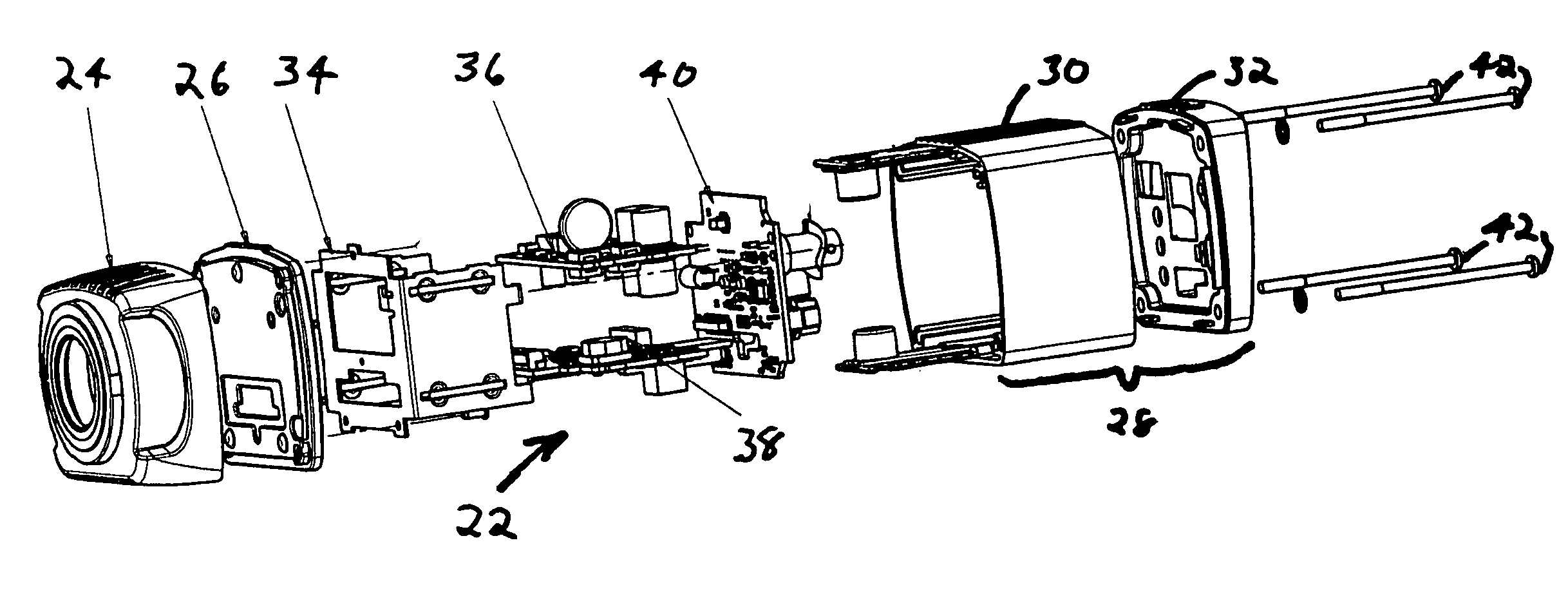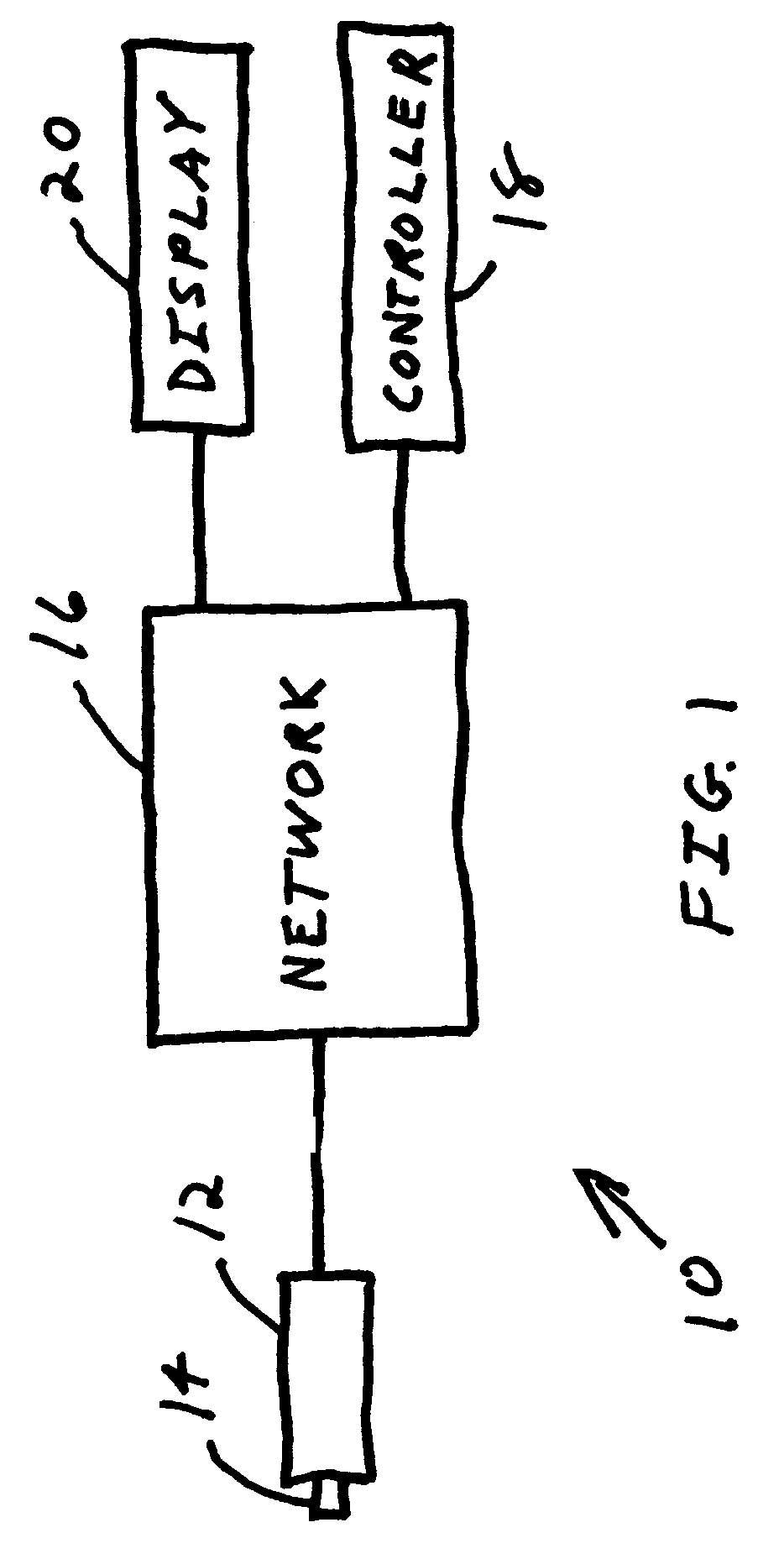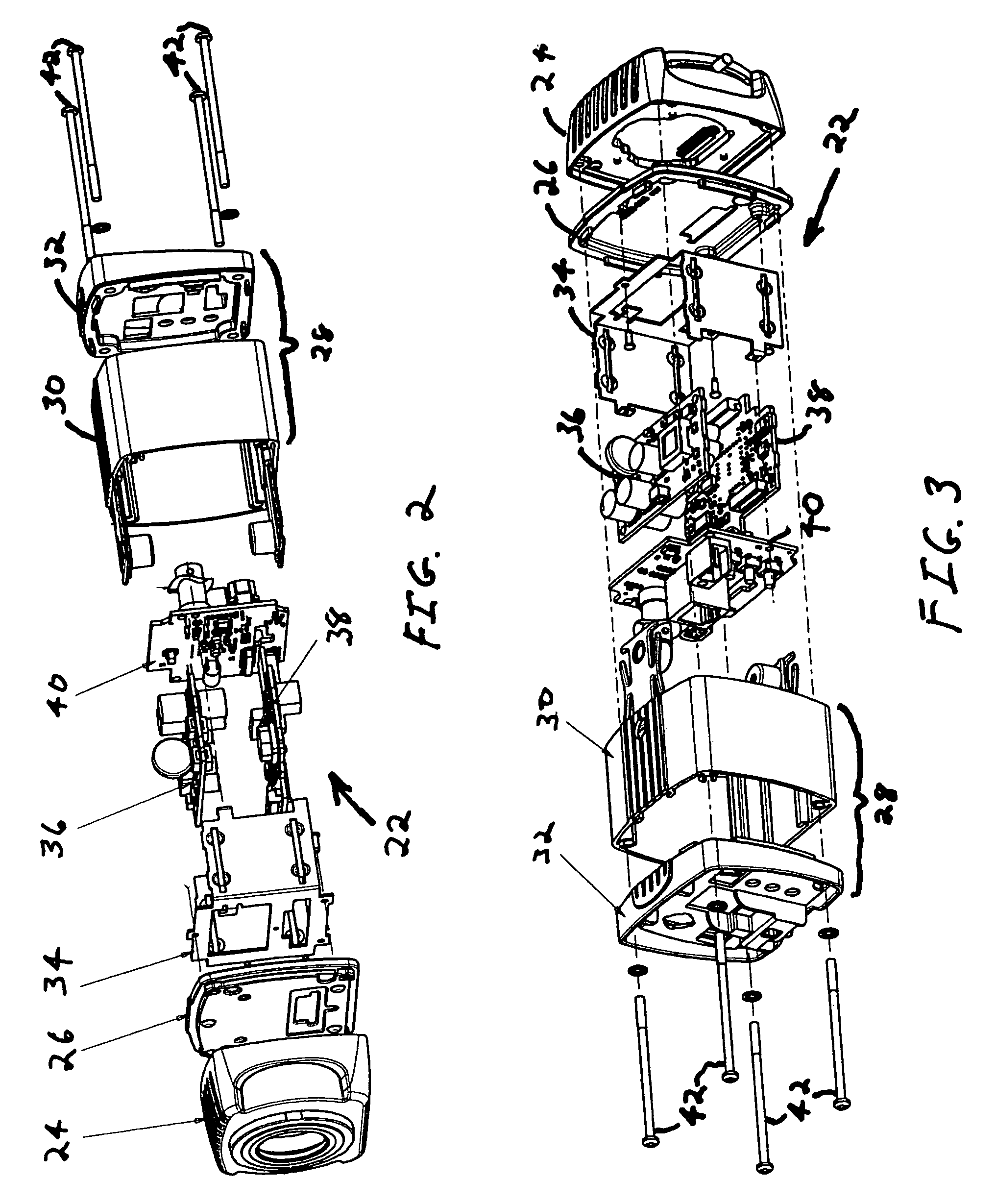Video surveillance camera
a video surveillance and camera technology, applied in the field of video surveillance cameras, can solve the problems of noise being introduced into the video signal, unsatisfactory heat generated by the image sensor itself, additional costs and design issues, etc., to minimize the heat generated by the processor electronics, minimize the physical contact, and minimize the effect of conta
- Summary
- Abstract
- Description
- Claims
- Application Information
AI Technical Summary
Benefits of technology
Problems solved by technology
Method used
Image
Examples
Embodiment Construction
[0022]Referring to FIG. 1, a video surveillance system 10 utilizing the present invention is shown in block diagram form. Video surveillance system 10 comprises a camera 12 having a lens 14. Camera 12 is connected to network 16, which can be a closed network, local area network or wide area network, such as the Internet. A controller 18 is connected to network 16 to control video surveillance system 10 as is known in the art. The video images captured by camera 12 can be viewed by the user on display 20. Video surveillance system 10 can comprise a plurality of video cameras, video recorders, and other surveillance devices as is known in the art.
[0023]Referring to FIGS. 2 and 3, a video surveillance camera 22 has a first housing 24, thermal barrier 26, and second housing 28. First housing 24 contains a back focus assembly which is discussed in detail with reference to FIGS. 5-7. Second housing 28 consists of body 30 and rear case 32. Chassis 34 is positioned inside second housing 28 ...
PUM
 Login to View More
Login to View More Abstract
Description
Claims
Application Information
 Login to View More
Login to View More - R&D
- Intellectual Property
- Life Sciences
- Materials
- Tech Scout
- Unparalleled Data Quality
- Higher Quality Content
- 60% Fewer Hallucinations
Browse by: Latest US Patents, China's latest patents, Technical Efficacy Thesaurus, Application Domain, Technology Topic, Popular Technical Reports.
© 2025 PatSnap. All rights reserved.Legal|Privacy policy|Modern Slavery Act Transparency Statement|Sitemap|About US| Contact US: help@patsnap.com



